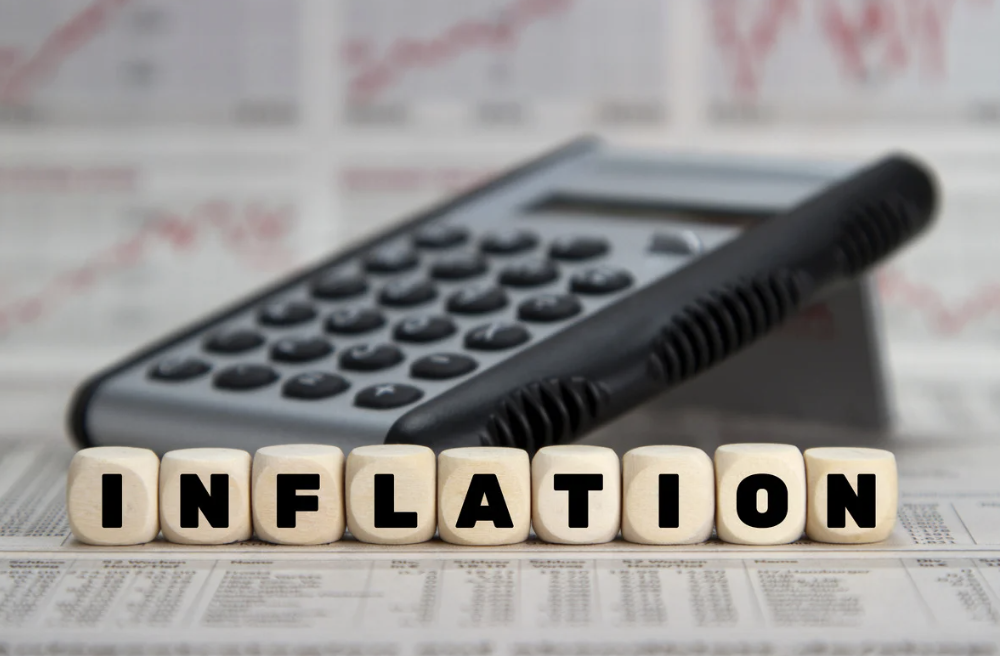On Wednesday, fresh statistics revealed that inflation slowed more than anticipated in May
This is encouraging news, coming just hours before the Federal Reserve is scheduled to publish its most recent interest rate decision.
On Wednesday, the Bureau of Labor Statistics published the most recent Consumer Price Index data, which showed a 3.3% year-over-year increase in consumer prices. This was a little slowdown from April’s 3.4% pace.
The last time prices were flat on a monthly basis was in July 2022. After a 0.3% increase in April, falling gas prices kept inflation under control.
As stated by Philip T. Powell, executive director of the Indiana Business Research Center and clinical associate professor at the Indiana University Kelley School of Business, “This is the best news we could’ve gotten this morning” in an interview with CNN. “This [monthly] figure had to be below 0.2% for the Federal Reserve to be satisfied.”
Additionally, he said that if it did, it would indicate a decrease in inflation, which would allow the Federal Reserve to drop interest rates.
The consensus forecasts from economists, as reported by FactSet, were for a 0.1% monthly growth and a 3.4% annual gain.
Gas prices fell 3.6% from April to May, which helped to moderate inflation that month. Year-to-date, they’re still up 2.2%. A little acceleration in inflation at the restaurant level drove a 0.1% increase in total food costs, which were unchanged at the grocery store level.
Inflation in the property market remains stubbornly high, but automobile insurance and transportation costs decline
The highly monitored “core” metric reached a new three-year low of 3.4% on an annual basis, and it grew only 0.2% for the month, the weakest pace since October of last year, when volatile items like petrol and food are excluded.
Kathy Bostjancic, chief economist at Nationwide, stated in a report released on Wednesday, “Adding to the good inflation news, core services inflation (excludes energy services) printed its mildest monthly increase since September 2021.”. “The fact that core services inflation has been so persistent and the main cause of the slowdown in overall inflation makes this a noteworthy development.”
Even while concerns about a recession are fading, the high cost of living is still a huge problem for Americans
Nevertheless, the increase in housing costs, which has been steadily rising at a rate of 0.4% for the last four months, more than made up for the drop in gas prices, highlighting the strain that Americans are experiencing due to these costs. Shelter inflation fell to 5.4% on an annual basis, its lowest level since April 2022, a slowdown of 0.1 percentage point. The cost of housing, however, is not only above general inflation but is also exceeding both its pre-pandemic average and the 3.3% rate seen in February 2020.
A thorn in the side of the Fed’s goal to see total inflation back to target is the shelter index, an esoteric measure of housing expenses. (The Personal Consumption Expenditures price index, an independent measure of inflation, remained unchanged at 2.7% in April, and that goal is based on it.)
Despite not completely reflecting the decrease in market-rate rentals, the consistently high readings of shelter, which is strongly weighted in the CPI, do speak to the pain that Americans are experiencing in their largest monthly cost.
The persistence of the problem of affordable housing stands up in these figures, according to Powell of Indiana University. “The housing market is going to remain stagnant because there is a lot of unmet demand.”
With a 0.5% monthly decline, transportation service rates have fallen for the first time since the autumn of 2021. Additionally, car insurance premiums fell by 0.1 percent, marking a significant departure from the recent hikes.
Transportation service prices are up 10.5% year-over-year, and auto insurance premiums are up 20.3%, so those expenses are still running high for customers.
“The big and important things that households spend their money on — food, transportation, and shelter — there’s not been a lot of relief there,” said Sean Snaith, an economist from the University of Central Florida, telling CNN.
Chances of Fed cuts are increased by soft CPI
The most often mentioned measure of inflation is the Consumer Price Index (CPI), which measures the average rise in prices for a common basket of goods and services.
However, it was just the prelude on Wednesday.
Its release came in the hours leading up to the Federal Reserve’s planned policymaking meeting conclusion, presentation of updated economic forecasts, and announcement of future interest rate moves.
The Federal Reserve is making great strides in combating inflation. Accordingly, why isn’t it reducing rates?
Despite central bankers’ hopes for a softening CPI, analysts predict that Wednesday’s data will have little impact on interest rates, which are widely anticipated to remain unchanged (with markets projecting a slim 0.1% chance of a June decrease).
“With the recent hawkish rhetoric from the Fed, it seems highly improbable that we will see a rate cut in July,” said Preston Caldwell, senior US economist at Morningstar, on Wednesday. “However, it is now widely believed that rate cuts will begin in September.”
The probability of a rate drop in September increased to almost 63% on Wednesday morning from 46.8% on Tuesday, according to the most recent predictions from the CME FedWatch Tool, suggesting that traders are in agreement.
With the publication of the next Summary of Economic Projections (SEP) on Wednesday, the Federal Reserve is likely to provide some hints. The “dot plot,” a graphic depicting the central bankers’ anticipations for interest rates, is included in the quarterly publication along with their predictions for important economic metrics including inflation, GDP growth, and unemployment.
The Federal Reserve hinted at the prospect of three cuts for the rest of the year in its last SEP, which was announced in March.
Due to the shorter runway remaining and the continued arrival of reasonably solid economic data (such as the year’s hottest-than-expected inflation readings or stronger-than-expected employment increases), economists anticipate a decline in that figure.
After a series of poor readings to start the year, the Consumer Price Index (CPI) data for May came in a touch better than expected, according to a note written by Scott Anderson, chief US economist for BMO Bank. If this trend continues, the expectations of a rate decrease by the Federal Reserve in September and December will remain unchanged. The Fed will continue to be cautious and patient as restrictive monetary policy continues to accomplish its goals.



